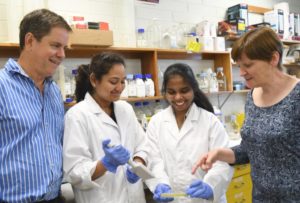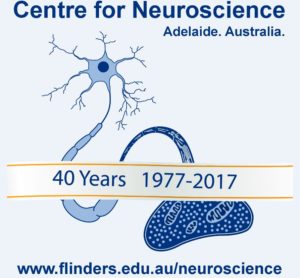
Flinders University researchers are pioneering a new and simple test to pick up signals of Motor Neuron Disease in patients.
The non-invasive urinary test has the potential to expedite the worldwide quest to develop better treatments, or even a cure, for the deadly neuro-degenerative disease.
The test, under further development at Flinders University and the University of Miami, is set to be used in clinical trials looking for improved drug treatments for MND.
The test measures a key protein biomarker found in the urine of MND sufferers as the disease progresses. The promising findings have been published in the high-profile international journal, Neurology, the medical journal of the American Academy of Neurology.
Currently there are no validated pharmaco-dynamic biomarkers for MND or Amyotrophic Lateral Sclerosis (ALS), also known as Lou Gehrig’s Disease.

Regular accurate and affordable testing of symptoms could lead to improved treatment and better interventions, says Flinders University Centre for Neuroscience senior research fellow Dr Mary-Louise Rogers.
“A standardised, easy-to-collect urine test could be used as a more accurate progression and prognostic biomarker in clinical trials,” Dr Rogers says.
“This will accelerate progress towards more rapid identification of improved treatments for MND and save time and money by faster exclusion of less effective or ineffective drugs.
“And in the future, it also could potentially be used to test people for early signs of pre-familial MND progression and used instead of patient questionnaires for regular testing of disease progress or drug suitability in existing MND cases.”
The urinary protein75ECD is currently the only biological-fluid-based biomarker of disease progression.
There is no cure for MND (or ALS) which causes the motor neurons or nerve cells that control muscle movements to slowly die.
Every day two Australians are diagnosed with MND and two people die, with almost 1,500 sufferers adding more than $1.9 billon to the nation’s healthcare costs a year (Deloitte Access Economics, 2016).
The comparative study of the testing system on MND and non-MND patients in SA over the past six years was conducted by Flinders University Centre for Neuroscience researcher Stephanie Shepheard and her supervisor Dr Mary-Louise Rogers.
 Collaborators and co-authors in the latest paper include leading Flinders Medical Centre MND Clinic researcher and clinician and University of Miami Miller School of Medicine Department of Neurology Dr Michael Benatar, who has trialled the biomarker test on MND patients in the US.
Collaborators and co-authors in the latest paper include leading Flinders Medical Centre MND Clinic researcher and clinician and University of Miami Miller School of Medicine Department of Neurology Dr Michael Benatar, who has trialled the biomarker test on MND patients in the US.
This study was supported by the US National Institutes of Health Rare Diseases Clinical Reseach Network, Motor Neurone Disease Research Institute of Australia, Flinders University Centre for Neuroscience and Flinders Foundation, ALS Association, Muscular Dystrophy Association, ALS Recovery Fund and Australian Rotary Health (Neville and Jeanne York Family Scholarship).
Neurology has published the paper, ‘Urinary p75ECD: A prognostic, disease progression, and pharmacodynamic biomarker in ALS’, by SR Shepheard, J Wuu, M Cardoso, L Wiklendt, PG Dinning, T Chataway, D Schultz, M Benatar and ML Rogers. Read the paper online here or at http://www.neurology.org/content/early/2017/02/22/WNL.0000000000003741.short

